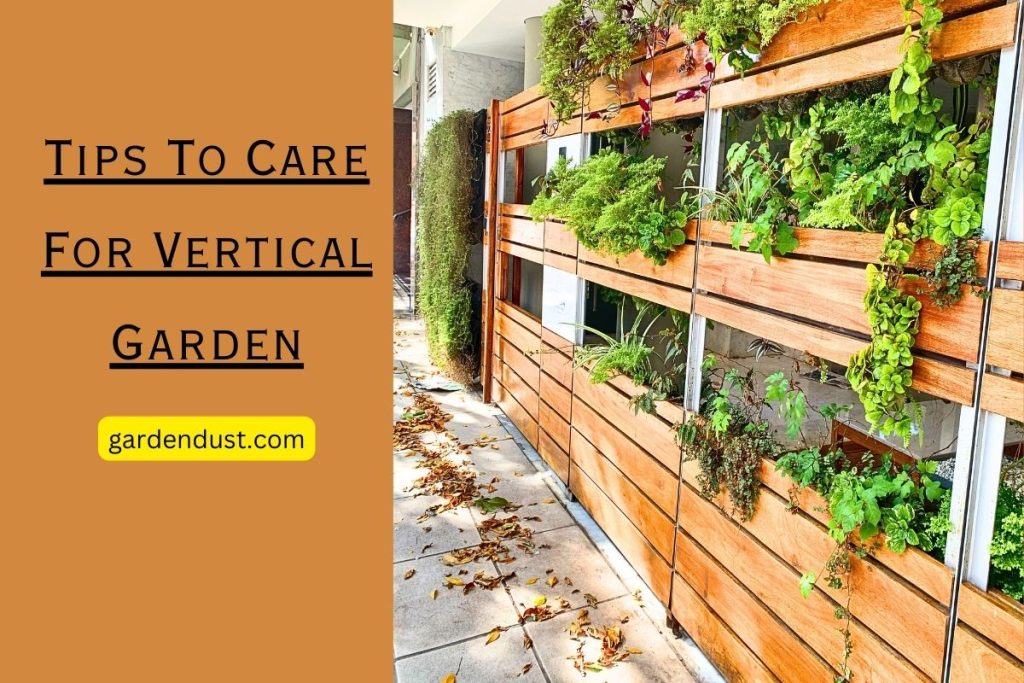Vertical gardens have become popular in both indoor and outdoor settings, including homes, offices, commercial buildings, and public spaces. They offer a creative and visually appealing way to incorporate greenery into architectural designs while maximizing limited space.
Caring for a vertical garden requires attention to specific aspects to ensure the health and vitality of the plants. Here are some tips to help you care for a vertical garden:
- Watering: Vertical gardens generally require more frequent watering than traditional gardens. Since water tends to drain quickly in vertical installations, it’s essential to ensure adequate moisture. Regularly monitor the moisture levels and water the garden as needed, keeping in mind the specific requirements of the plant species. Consider using an automated irrigation system or drip irrigation to ensure consistent and efficient watering.
- Drainage: Proper drainage is crucial to prevent waterlogging and root rot. Ensure that your vertical garden has adequate drainage systems in place. This can be achieved through the use of a permeable growing medium, such as a lightweight soil mix, and by incorporating drainage layers or a drip tray at the bottom of the vertical structure.
- Fertilization: Vertical gardens may require regular fertilization to provide essential nutrients for healthy plant growth. Choose a slow-release or liquid fertilizer suitable for the plant species in your garden. Follow the instructions on the fertilizer packaging and apply it according to the recommended dosage and frequency. Avoid over-fertilizing, as it can lead to nutrient imbalances or damage to the plants.
- Pruning and Trimming: Regular pruning and trimming are necessary to maintain the shape and appearance of the plants in a vertical garden. Remove any dead, damaged, or overgrown plant parts to promote healthy growth and prevent overcrowding. Prune back plants that tend to become leggy or overshadow others. Pruning also encourages bushier growth and can help maintain the overall balance of the vertical garden.
- Pest and Disease Management: Monitor your vertical garden regularly for signs of pests or diseases. Insects and pathogens can affect the health of plants and spread quickly in close proximity. Identify and address pest or disease issues promptly using appropriate methods, such as organic insecticides, beneficial insects, or disease-resistant plant varieties. Regularly inspect the plants and maintain good hygiene to prevent the spread of diseases.
- Light and Sun Exposure: Ensure that your vertical garden receives adequate sunlight or the appropriate levels of artificial light, depending on the plant species you have chosen. Different plants have varying light requirements, so select plants that are suitable for the available light conditions. Regularly assess the light levels and adjust the placement of the vertical garden if necessary to optimize sun exposure.
- Seasonal Care: Consider the seasonal variations and adjust your care routine accordingly. During hot and dry periods, you may need to increase watering frequency or provide shade to prevent plants from drying out. In colder seasons, protect the plants from frost or extreme temperatures by using protective covers or relocating them to more sheltered areas, if possible.
Remember to consult plant-specific care guides or seek advice from local gardening experts to tailor your care routine to the specific plant species in your vertical garden. Regular observation, care, and maintenance will help ensure the long-term success of your vertical garden. Happy Gardening…






